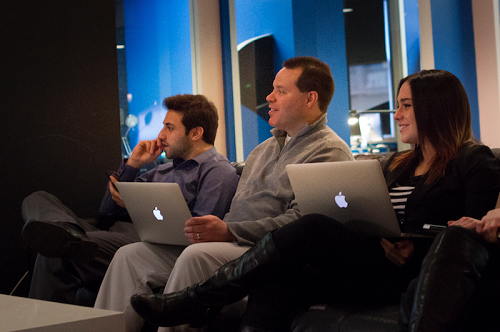When I accepted my position at PR 20/20, I was exhilarated when I gave the official “yes” to work at an agency. Then there was the reality that set in shortly after I hung up the phone. I’d been soaking up content marketing practices and strategies like a sponge for the last few years. The knowledge was there, but now I would need to put it into practice in a new way: agency life.
I’d never worked for an agency; my 16 years of marketing experience all fell on the client-side. Would I be able to adjust and adapt?
Below are some of the bigger adjustments I had to make in the transition and how I overcame them.
1. Multiple Clients
Instead of working with one company and its products, agency life meant working with multiple clients. You need to understand each account—who they are, what needs they fulfill, where they fit in their industries, what marketing they’ve done successfully (and unsuccessfully), and where you can help. You also need to be able to switch gears (and voices) often.
Add to that, working with different account teams that have different traits and processes. So, there’s a lot to keep straight.
Tips for Adjusting:
Be curious. Natural curiosity is a great trait to have in an industry that is evolving as quickly as marketing. In A Curious Mind, Brian Grazer explains how to use curiosity to:
- Fuel the excitement to learn.
- Learn new concepts.
- Meet new people.
- Spark creativity.
- Tell stories.
Celebrate curiosity and strive to learn everything you can about your clients. This leads to questions and answers that can better define clients’ needs, and uncover the perfect strategies and tools to meet client goals.
A second tip is to look for ways to use your past corporate experience to understand clients’ issues. For example, I know how hard it can be to convince an executive team to try something new, especially when the benefits may not come as fast as they want. This perspective helps me frame conversations in a way that resonates with clients.
2. Hybrid Marketing
I’ve worked with companies that stress improving your weaknesses. I’ve also worked with companies that believe in bettering your strengths to be the “go-to” person. At PR 20/20, we’re hybrid marketers, which means we wear all the hats:
- Analytics
- Content Marketing
- Email Marketing
- SEO
- Social Media
You must understand both your strengths and weaknesses to contribute value and focus your learning. Agency life includes doing a mixture of what I do well, while also working on areas I haven’t had as much experience.
Tip for Adjusting:
Always be learning. Now more than ever, there are tons of ways to learn. Read constantly, listen to marketing podcasts and webinars, go to events and conferences, and network. You need to keep up with the industry.
Don’t forget to take advantage of the people you work alongside. Ask for advice or pick their brains. Learn from the diversity of approaches, and imitate those that work best for you. This works for managing your clients too.
3. Risk-Taking
Every company I’ve worked for emphasized taking risks. But, they never really supported risky ideas, as those would be the first cut due to budget or new focuses. But, PR 20/20 doesn’t only say it; they mean it. We’re expected to identify new tools and trends, test them, and share them with the team.
Our goal is to bring value to our clients. If there are tools that can help us do that better, we need to find them. Also, clients may ask questions about new technologies, and we need to be able to answer them. They look to us as the experts, so we can’t be technology laggards.
Tip for Adjusting:
Apply what you learn. Use your curiosity to fuel your learning. Then, apply that learning in new ways. It may be a new tool, process or strategy. Create a pilot program, measure the results, adapt and test again.
As Stephen R. Covey wrote in The 7 Habits of Highly Effective People: Powerful Lessons in Personal Change, “…to learn and not to do is really not to learn. To know and not to do is really not to know.”
4. Hour Tracking
I thought the hardest change would be tracking my time since I never had to do it before. Although we don’t use a billable hours model, we still track time for efficiency reporting. That said, once it became part of my routine, it wasn’t too hard to remember.
Tip for Adjusting:
There’s not really a tip here. The key is to just do it. Because I thought it would be my hardest change, it was always on my mind. If I do forget, I update our time tracker as soon as I remember. Now it’s become a habit and part of what I do as I transition what I’m working on.
Have you made a transition to agency life? Tell us what adjustments you made.
Thanks for reading and please share it with your friends.
This was originally posted on the PR 20/20 Marketing Agency Insider Blog.
Image source: PR 20/20
